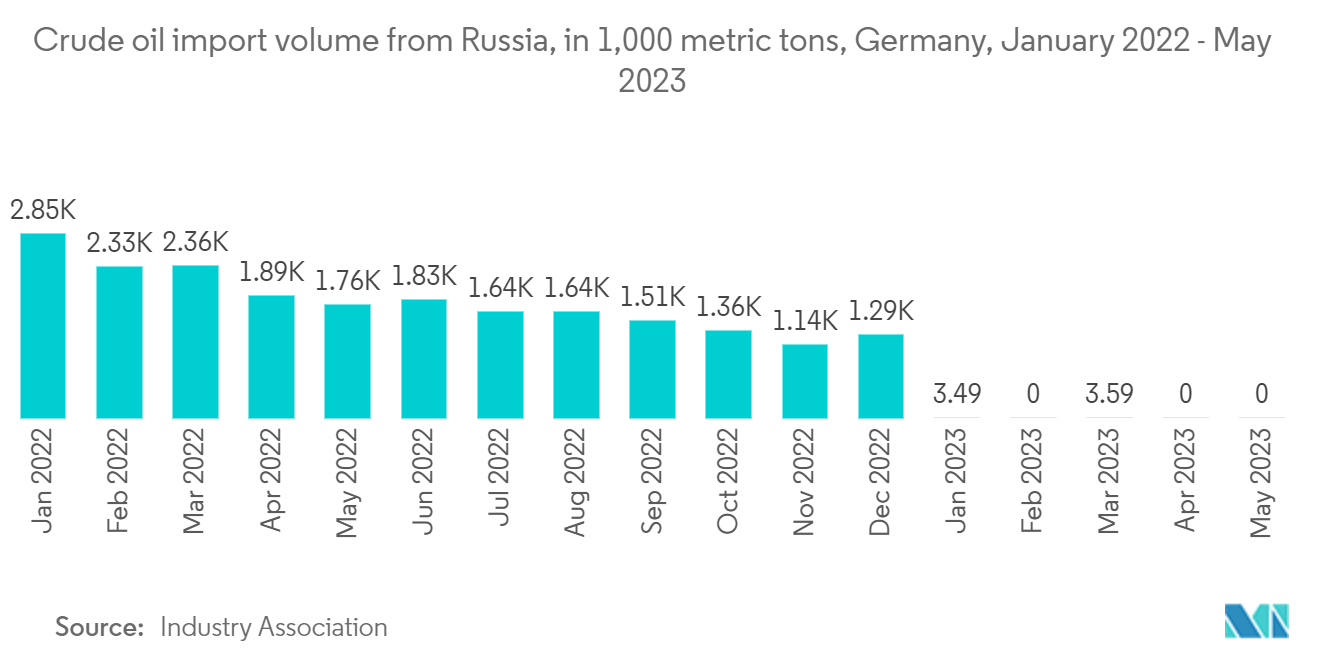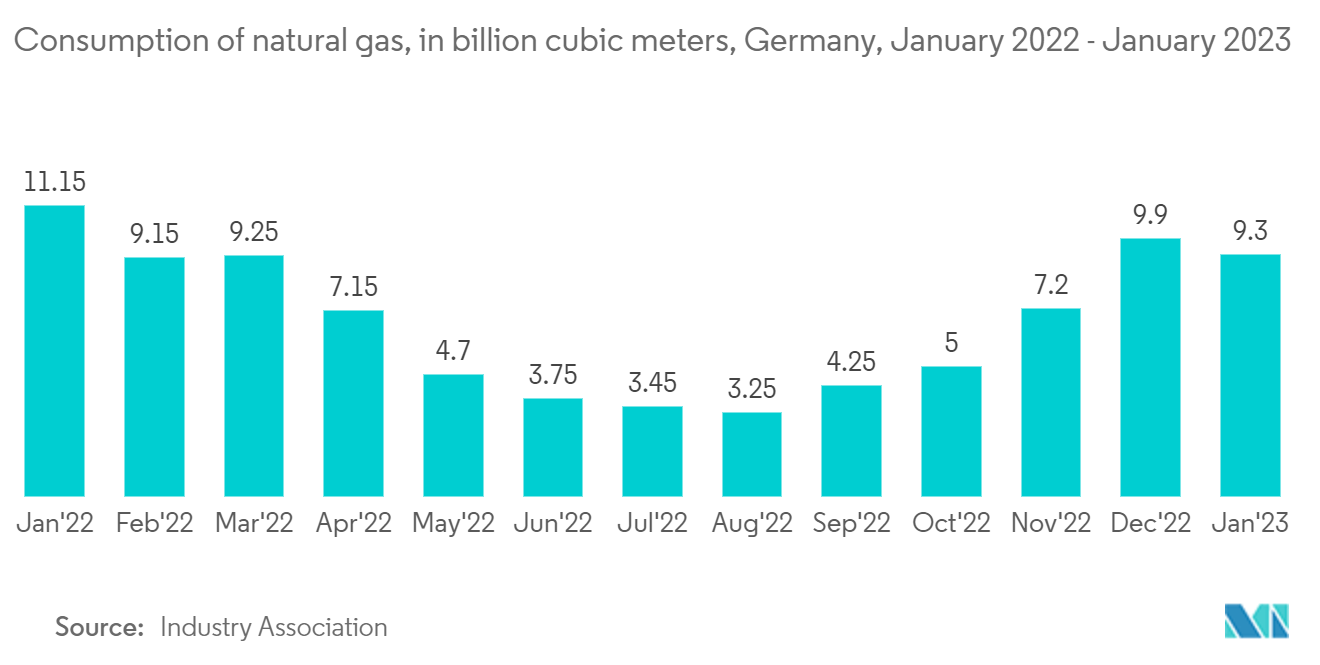Market Trends of Germany Dangerous Goods Logistics Industry
Decrease in Cross-border Transportation of Oil
Following the entry into force of the second phase of the oil embargo, only the remaining volumes of crude oil that had been exported to the EU from Russia before the turn of the year were imported into Germany in January 2023 (3,500 tonnes), according to the Federal Statistical Office (Destatis).
The volume of imports in January 2022 was 2.8 million tonnes. The total volume of imports of crude oil from Russia in January 2023 decreased by almost 90%, and the arithmetical volume decreased by 99.9%.
The share of Russia in the total crude oil imports of Germany decreased from 36.5% in January 2022 to just 0.1% in January 2023. In total, 6.2 million tons of crude oil worth EUR 3.8 billion (USD 4.10 billion) were imported into Germany in January 2022, which decreased by 20.5% in volume terms and by 9.6% in value terms compared to the same month last year.

Increasing Demand for Gas in Germany
In 2022, natural gas accounted for slightly less than 25% of Germany's primary energy use, making it its second most important resource. Germany is one of the largest importers of natural gas in the world, with about 95% of gas consumption being imported, according to BGR.
Germany produced about 5.7 bcm of natural gas in 2021, but geologists believe the fields are close to exhaustion. Domestic production of natural gas has been declining since 2004 and is expected to reach the end of its life in the next few years. Although the war in Ukraine has brought the topic of unconventional fracking back into the spotlight, legal constraints, popular and government opposition, and the country's goal of becoming carbon neutral by 2045 make its use highly unlikely.
In 2021, Germany imported 5,009 PJs of natural gas, according to data from the Federal Office for Economic Affairs and Export Control (BAFA). The share of imports from different countries was not clear for several years. In 2016, BAFA ceased to publish import volumes by country due to data privacy regulations.
The economy and climate ministry reported in 2022 that before the invasion of Ukraine by Russia, 55% of gas imports were from Russia, 30% from Norway and 13% from the Netherlands. According to the energy industry association BDEW, early estimates showed that about 20% of natural gas used in Germany in 2022 came from Russia.
BDEW noted that in some cases, it is hard to determine the origin of gas that crosses the border into Germany. For instance, pipelines from Austria and Switzerland can contain Russian gas (via Ukraine), Algerian natural gas (via Algeria), or LNG (via Italian LNG terminals).



